Just as veterinary medicine calls for a unique skill set, vet jobs require a unique approach to writing your CV. You need to give hiring managers a complete picture–medical credentials, soft skills, specialisations–in just one glance. That can be a daunting task, so here are a few tips to get you started:
Format
Let’s start with the basics: chronological CVs are standard in the veterinary and medical fields, and are the least likely format to get you bounced by the ATS before a manager ever sees all your hard work. Start with your most recent experience and work your way back. While conventional wisdom says to keep it to one page, if you have a lot of experience a two-page CV is fine.
Pay attention to readability and white space. Think about it–the CVs that get seen by human eyes will probably be sorted quickly during a brief admin session in a busy clinic. Keep it standard and professional, but pay attention to how formatting can make your words stand out. And then make sure to save a PDF so it stays formatted!
Summary or Objective
Writing a career summary or objective can be one of the most challenging parts of creating a CV. For starters, which do you use?
While there’s no hard rule, a summary is best for those who have a significant amount of experience–at least a year or two, although if you’ve been in the same role that entire time, you may want to go with an objective to describe why you’re looking for a new role.
For new grads, an objective is best. Demonstrate what you’ve learned, your passion for the job, and why you’re suited to it. Mention skills you already have and measurable details.
In both cases, you’ll need to tailor this to each role you apply for. Look for keywords in the job ad and see how many you can mention here.
Job Description
List your roles in reverse chronological order, with the most recent first. Include the job title, the name of your employer, and the dates (use “present” if you’re still there). Then–for your most recent roles–write up to six bullet points describing what you did. For older roles, write less and stick to your most relevant achievements.
Start each bullet point with an action word and list measurable achievements, not just duties. Again, target these to the job description for each job you apply for.
Education
If you have over five years’ experience as a vet, this can just be a simple list of universities attended, dates and degrees. Don’t forget to list your undergraduate degree too.
For those with under five years’ experience, you want to include 4-6 key educational achievements that match the job description. If you’re a new graduate, put this section before your work experience, as it’ll carry more weight.
There’s no need to include your grades unless you graduated in the past two years–and even then, if you didn’t get at least a 2:1, it’s probably best not to.
Include a section at the end for any veterinary certifications you have.
Skills
List both hard and soft skills in this section, including less obvious ones like communication skills. Again, target this to the job description, and prove you actually have these skills by working them into your education and experience sections.
Extras
New grads in particular will benefit from extra sections. Consider adding language skills, projects, achievements, certifications, awards, hobbies, and particularly volunteer roles. 82% of recruiters prefer candidates with volunteer experience
Cover Letter
Almost 50% of recruiters will reject your application if you don’t have a cover letter.
Again, target this to the job. Start with a “hook” to catch their interest, keep it short (200-400 words), and close by offering your expertise and inviting them to contact you.
Bonus: Follow up
After you’ve sent in your application, always make sure you follow up. It’s often the trick that will get you the interview.
For further insights into CV writing, interview skills and optimising your job search, partner with NSV – Veterinary Recruitment. Register your CV to get started.









[…] make the best start, make sure you know how to write a vet CV and cover letter in the UK. 3. Get your […]